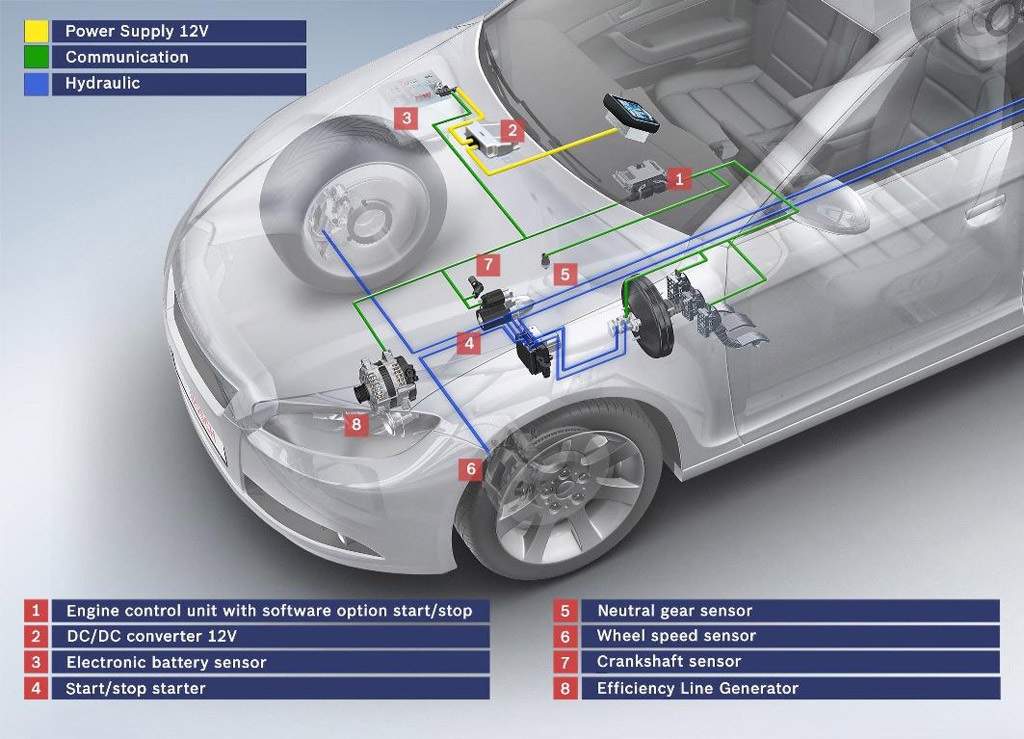
This dispenses with today’s costly, continuous process of generating a vacuum using either the internal combustion engine directly or a vacuum pump.
Bosch ibooster part driver#
The driver does not notice this harmonious interplay of motor and brakes, as pedal feel remains absolutely normal.īosch has integrated a motor into the iBooster to control the degree of brake boosting via a two-stage gear unit for situation-dependent support on demand. If the brakes to be applied harder, the iBooster generates the additional braking pressure needed in the traditional way, using the brake master cylinder. It thus covers all common braking manoeuvres in everyday traffic. The Bosch iBooster recovers almost all the energy lost in typical braking operations by ensuring deceleration rates of up to 0.3 g are achieved using the electric motor alone. This would avoid the loss of valuable energy through braking. Ideally, cars would be slowed down purely as a result of their electric motor converting their kinetic energy into electricity. If hybrid and electric vehicles are to achieve their intended range and fuel efficiency, they must recover as much electrical drive energy as possible when braking. Increasing energy recovery to increase range Over the medium term, it will displace conventional brake boosters in many vehicles. Production of this innovation will start in 2013 for three series-produced models. What is more, the iBooster complements a modular range of components from which Bosch can put together a suitable braking system for any vehicle configuration. “The iBooster makes hybrid and electric vehicles even more efficient, while enhancing safety through shorter braking distances,” says Gerhard Steiger, president of the Bosch Chassis Systems Control division. Now Bosch has developed the iBooster, an electromechanical brake booster that provides situation-dependent support when the driver initiates braking. Until now, there has been limited scope for recovering braking energy and the driver’s pedal force can only be amplified by a single predetermined degree. Over the same period, however, the standard vacuum-based approach to boosting brake force has remained almost unchanged. ABS and ESP in particular have significantly increased safety. In recent years, car braking systems have become ever more powerful. The factory employs over 900 people.Bosch has developed an electromechanical brake booster that provides situation-dependent support when the driver initiates braking. The Bosch factory in Mirkow has been producing power assemblies and components for brake systems for the automotive industry since 1996, including for BMW, Citroen, Fiat, Ford, Nissan, Opel, GM, Peugeot, Renault, Suzuki or Toyota. Piotr Pyzio, the director of the Mirków plant, predicts that by 2027 some 10 million vehicles will be equipped with the iBooster 2 made in Mirków. The line is equipped with seven modern robots, and thousands of sensors watch over the correct course of the production process, which help streamline and optimise the process,” the company wrote in a press release. “The new production line consists of 44 automated assembly stations equipped with advanced assembly, control, vision detection and dosing systems. The iBooster system increases driving safety by shortening the stopping distance, works with driver assistance systems, and also plays an important role in the emergency braking process and when braking with active cruise control. The plant will produce the iBooster 2 second generation braking system component mainly used in hybrid and electric vehicles.

Bosch company has invested nearly EUR 20 mln in a new production line in its factory near Wrocław, south-western Poland.īosch has launched a new, EUR 18.8 mln production line at its factory in Mirków, near Wrocław.


 0 kommentar(er)
0 kommentar(er)
